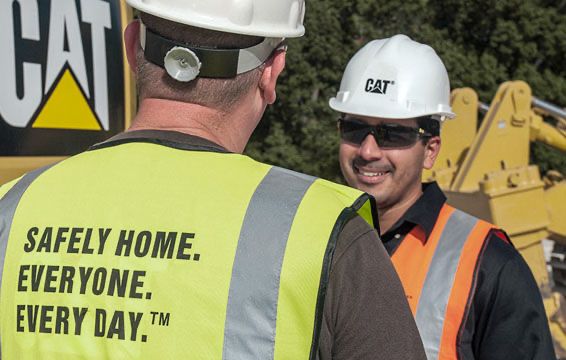

Sign In
Welcome! Sign In to personalize your Cat.com experience
If you already have an existing account with another Cat App, you can use the same account to sign in here
Register Now
One Account. All of Cat.
Your Caterpillar account is the single account you use to log in to select services and applications we offer. Shop for parts and machines online, manage your fleet, go mobile, and more.
Account Information
Site Settings
Security
When a Mistake Happens, Are You a Finger-Pointer or Context-Seeker?
Why your mindset about mistakes matters so much
Someone on my team made a mistake last week. Thankfully, no one was injured, and there was no material damage, but it slowed us down. It necessitated re-work, and unplanned work, for multiple people. We had to schedule unexpected meetings and had many other communications that cost us productivity and diverted our attention from other tasks.
At the end of the week, although exhausted by the fallout from this mistake, my overriding feeling was gratitude. I wouldn’t ask for the same thing to happen again, but through the turmoil I discovered some very significant gaps in our process, and I realized that one person’s mistake illuminated oversights and operational inefficiencies lying dormant in our system – conditions that could have led anyone to make the same mistake.
Meeting Challenges with Care and Curiosity
Having a mindset of care and curiosity in the face of challenge makes every obstacle an opportunity for improvement. Because people are inherently fallible – mistakes are normal, with biological drivers – we need to build readiness to respond effectively when they happen. How we respond will impact our relationships with the people directly involved, and the story that emerges will likely set an expectation for others on the team about what will happen if they, too, make a mistake. Will there be finger-pointing, or context-seeking?

When I resisted the innate urge to lay blame on someone for last week’s mishap, and instead got curious, I discovered:
- The action (mistake) made perfect sense given the information available to the employee.
- The same action had occurred before, multiple times, without incident.
- The action could have had much costlier consequences.
- My training plan to properly equip this person for success was lacking. (Ouch!)
Ideally, we uncover the latent conditions threatening safety in our workplace before a lapse in attention, a mistake, a near miss or incident occurs. The same care and curiosity that helped me learn after something went wrong could have been applied when things appeared to be functioning perfectly. If I had observed the same work a week prior, I might have identified the potential for a mistake and been able to implement systematic and behavioral fixes before things went badly.
Get Proactive with Operational Learning
Asking operational learning questions when things seem to be working well is a great strategy to identify how work as performed may differ from work as planned and prescribed. No one plans for mistakes, but by learning from normal work we can build systems that keep us safe when one occurs. Asking our teammates questions like, “How easy, or difficult, is it to follow the standard work protocol?” can be enlightening. If you have strong psychological safety on your team, a follow-up question like, “What deviations do you make to get the job done?” will invite the person to explain the tradeoffs they make when work as planned is difficult or impossible.
This communication style about safety is very different from traditional practice, and it requires leaders to understand why blame doesn’t really work in the long run. Caterpillar Safety Services’ new MindShift for Leaders program has helped me understand why it’s far more effective to seek perspectives rather than point fingers.

This is why Mindset is one of the Components of a Resilient Safety Culture. If you’re working to overcome a production-at-all-costs culture, a fear-based culture in which people expect to be disciplined or fired if they make a mistake, or a top-down culture where the message is “do as you’re told, and don’t ask questions,” MindShift for Leaders is a great way to explore a more effective approach.
This week everyone on my team knows what happened, and they know how much I appreciate the person whose action – although not what I intended – led to improvements in our process that will benefit everyone. It opened up discussion about similar issues with other processes, and now we have a few more fixes to make, opportunities that otherwise may not have come to light without negative consequence. Meeting challenges with care and curiosity brings out the best in our team, our system and the customer experience we deliver.
If your organization would like to cultivate stronger safety culture resilience, or to explore the many solutions available from Caterpillar Safety Services to improve your system, mindset, leadership and ownership, please visit www.cat.com/safety.

Abby Fansler
Consulting Manager, Caterpillar Safety Services
Abby Fansler is the Consulting Manager for Caterpillar Safety Services. She leads a global team of culture and leadership consultants who guide Caterpillar teams, Cat® dealers and customers to build resilient safety cultures. Abby is a former international journalist who channels her zest for capturing diverse perspectives into helping leaders and teams identify purpose and then achieve big goals by bringing out the best in people and systems. Click here to follow Abby on LinkedIn.
GET THE LATEST FROM CATERPILLAR MINING DELIVERED RIGHT TO YOUR INBOX


